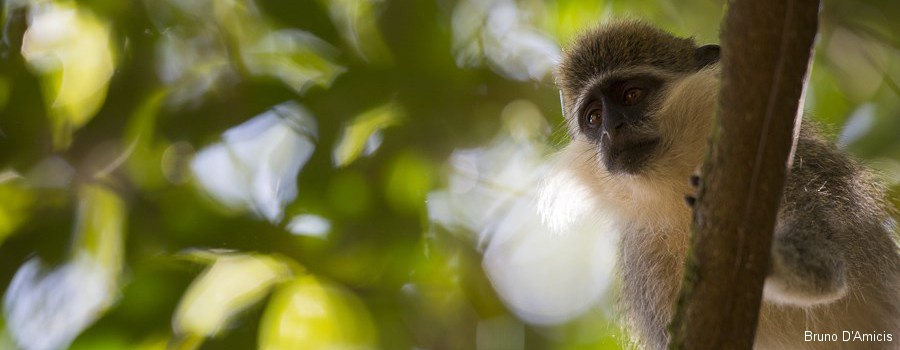
Lake Tana: A living landscape
A wildlife cornucopia
Lake Tana is known far and wide for its spectacular scenery and ancient cultural heritage, but what many don’t know is that it is also home to a wealth of wildlife.
Just take a short cruise on the lake and you will see the spectacular biodiversity the lake has to offer. Hippopotamuses are one of the most eye-catching species. They can best be spotted where the Blue Nile flows out of Lake Tana, spending the day basking in the shallow waters of the lake. Under the surface, more than 28 unique fish species have prospered, with an astounding 21 endemic fish species found in the lake.
Enter the dense forest patches on the islands and you will discover another world. Hear the calls of the beautiful Black and White Colobus Monkeys as they leap from tree to tree, gliding through the air with their long hair and tails billowing out like a parachute behind them. The luxuriant vegetation found on the islands and small forest patches provides excellent habitat for butterflies and dragonflies such as the Black-tailed Skimmer and the Dancing Jewel damselfly.
Despite their reputation as cowardly scavengers, the highly intelligent spotted hyenas are thrilling to encounter in the wild and can be seen in the future Lake Tana Biosphere Reserve. You will want to see the prickly Crested Porcupine, but watch out for those spines! The shy Duiker is a small antelope that loves dense forest undergrowth and the curious Genet, with its handsome spotted coat and long stripy tail, is a kind of cat related to the Civet.
Lake Tana also has its fair share of reptiles. Metre-long Nile Monitors can be seen peeking their heads up from behind rocks and flicking their long forked tongues, tasting the air around the shores of the lake, especially where there is adequate vegetation cover such as from papyrus. Some visitors cannot believe their eyes when they first see the elusive and rarely encountered African Rock Python, Africa’s largest snake. These magnificent animals live in the swamp areas along the shoreline of Lake Tana and can grow up to six metres in length.
